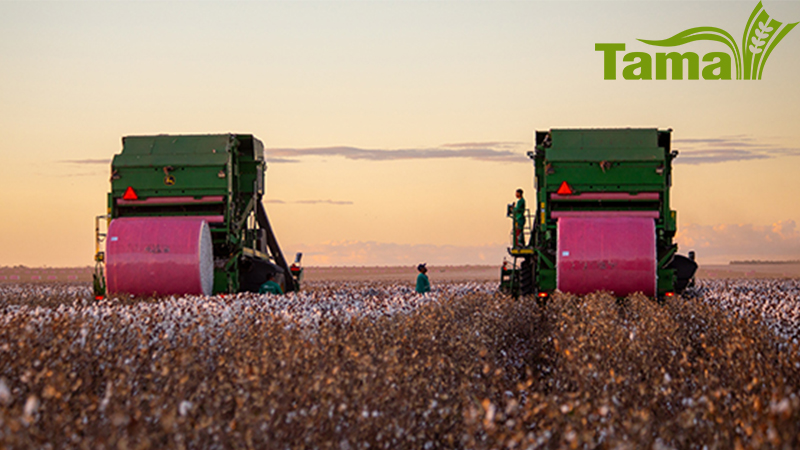How to Reduce Fire Risks at Harvest Time
During cotton harvest, environmental conditions play a huge role in determining how smoothly picking or stripping will go following defoliation. Is the weather sunny, dry and warm, or overcast and damp? Is it windy or just breezy? And, how have growing conditions as the crop finished out impacted fiber characteristics?
The last point is important, especially in seasons with low micronaire cotton and excessively dry weather at harvest. Those two points led to an abundance of cotton harvester fires over the past several years. But even under normal conditions, the risk of harvester fires is ever present.
In a blog post, staff at Janeka Insurance Agency in Victoria, TX, notes, “Regardless of the reasons, the fact is that a fire in the field can cause significant damage and often a total loss to equipment. The fire cannot always be avoided, but with an installed fire suppression system, the equipment damage can be greatly reduced or avoided altogether. That is why some insurance companies have created the underwriting requirement that this after-market system be installed.
“Besides the protection of property, the risk to life can be protected by detection and suppression equipment.”
Several aftermarket fire suppression systems for the John Deere module building picker and stripper are available, as well as newer non-corrosive extinguishers for farm and cotton gin use. The cost of these systems is relatively nominal when compared to the value of the equipment, potential downtime and extra expense in locating rental equipment replacement, and the cost of insurance and deductible.
Reducing Fire Risks
It’s often said that an ounce of prevention is worth a pound of cure – especially when it comes to specialized farming equipment like pickers and combines. Here are some reminders and tips to help protect equipment before harvest begins:
- Keep up with regular machine maintenance. Inspect bearings daily and replace them if you see signs of overheating or excessive looseness.
- Be alert for rocks, wood or debris that can lodge in the picking units and cause sparks.
- Repair leaks and clean up all fuel and oil spills before cotton lint or trash can mix in. Those mixtures are combustible and hard to control if ignited.
- Clean the machine completely twice a day during harvest. Be sure to check and clean out of sight areas like under the engine compartment, under the accumulator and under the conveyor belt.
- Check all fire extinguishers and fire equipment on the machine to make sure they are charged and ready for use and replace them if they’re not. Be familiar with the chassis fire extinguisher port location.
- Do not unload near electrical wires.
- Do not refuel with the engine running, while smoking or around an open flame.
- Do not use flammable petroleum wetting agents in the moistener system.
- Be aware of wind conditions and direction. Fires are more likely in dry conditions with high winds.
- In the event of a fire, pull straight into the wind so it blows in the face of the driver and keeps smoke and flames away from the cab.









